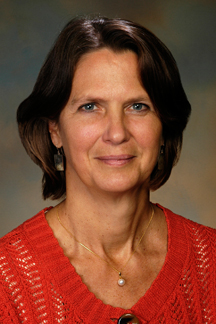'An Excellent Time for Neuroscience': An Interview with Hollis Cline
Professor Hollis Cline, who was recently appointed chair of the Department of Molecular and Cellular Neuroscience and director of the Dorris Neuroscience Center at The Scripps Research Institute (TSRI), sat down recently with Mika Ono of News&Views to talk about the neuroscience research on TSRI’s California campus and plans for the future.
What has it been like for you here at TSRI since you arrived in 2008?
It has been great. Scripps is different than Cold Spring Harbor Lab, where I came from. Scripps is bigger and there’s much more emphasis on chemistry and the interaction between biology and chemistry, which I find interesting and particularly exciting for neuroscience.
Tell me about the Department of Molecular and Cellular Neuroscience.
The neuroscience group here is tightknit and highly interactive. Many of the research programs are focused on the processing of sensory information or on how sensory information affects behavior. We have researchers who work on other areas as well, for example, Kristin Baldwin is interested in understanding genomic variation between neurons and what influences the flexibility of genomic material.
What we have in common is an amazing interest in talking to each other deeply about the science that each of us does. It is an interactive and rewarding environment to work in and I think the students and postdocs love it here because it is a very open community.
Do the department and the Dorris Neuroscience Center overlap?
Yes, the department includes more faculty than the Dorris Neuroscience Center—which comprises the scientists in one particular building.
In fact, we celebrated the Dorris Neuroscience Center’s annual Founder’s Day on May 4. Activities included a lecture by Karel Svoboda, now at the Howard Hughes Medical Institute’s Janelia Farms Research Campus, followed by a reception with philanthropist Helen Dorris, who founded the center in 2006.
Helen is wonderful. She is very involved. She also stops by the center periodically and goes out to lunch with faculty. She is remarkably on top of the work that we do and we have real conversations about the science.
Your own work fits into the circuit investigations you mentioned?
The work we do is mostly focused on the role of sensory experience on brain development. We’re interested in how sensory experience promotes the development and connectivity of individual neurons. Classic experiments in the 1960s and 1970s, which resulted in a Nobel Prize to Torsten Wiesel and David Hubel, showed that loss of visual input during the time an animal is developing has permanent, life-long effects on its ability to see and process visual information. The question that still drives our research is how the cellular and molecular mechanisms triggered by sensory input ensure that neurons connect with one another.
Interestingly, sensory deprivation has a long-lasting impact on brain development and function in virtually every animal that has been studied. More recent work has also shown this phenomenon goes beyond sensory input to other types of brain activity, including cognitive functions. So learning to reason or think through problems also requires what we call experience or practice for neurons in those parts of the brain to form connections. This suggests that if you don’t get practice and experience in cognitive tasks like decision making early on in life, there can be some sort of remediation, but it is extremely challenging.
So this research has real-world implications in terms of health and development.
Yes, it also has implications as to how kids learn. There might be more and less effective ways for kids to learn, depending on how these developing circuits are engaged and how tasks relate to the properties of the developing brain compared to the brain of an adult. Adults learn, but they learn differently than kids.
What are your methods?
Most of our experiments use frog tadpoles. Part of the reason we use these animals is that they are transparent when they are young. That way we can take the whole, living animal and put it on a microscope platform to see directly into the brain. That’s a big advantage for us because we can test the function of genes in circuit development by taking direct observations of neurons as they develop in living animals. This is impossible in most animals. We also do a lot of proteomic analysis in collaboration with John Yates. Together with the Yates lab we have improved methods to identify changes in brain proteins that occur with sensory experience and then we test the function of those proteins in the animal.
In the department as a whole, we tackle these issues about brain function at several levels of biological organization, including molecular and cellular levels of analysis, electrophysiology and imaging and behavioral analysis. The Dorris Neuroscience Center also has a Nikon Center of Excellence, so we have a fantastic capacity for a variety of imaging methods. We are fortunate to have a PhD-level scientist—Kathy Spencer, who leads the center—available to help design and execute state-of-the art imaging experiments.
Send comments to: press[at]scripps.edu














